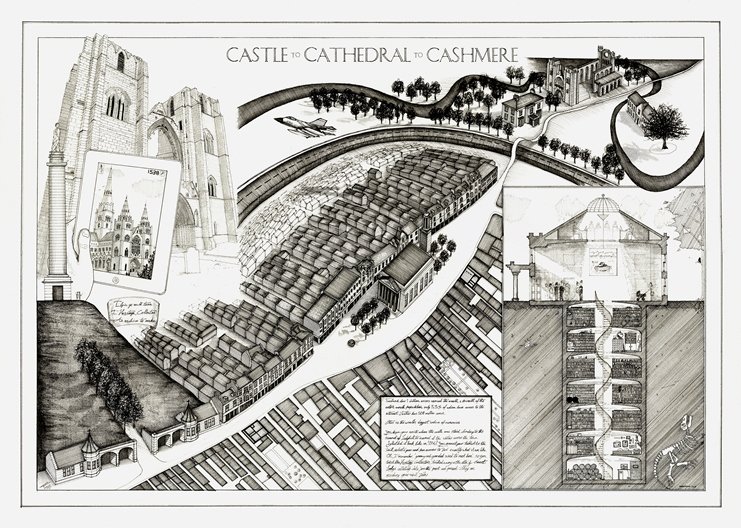
© Anna Gibb
Two recent architecture graduates, Ross Anderson and Anna Gibb, travelled to Russia to investigate a loose collective of young architects who lived in Moscow in the 1980s and called themselves ‘the Paper Architects’. The group, which included Alexander Brodksy and Ilya Utkin, sought to escape the restrictions that came with working under a communist regime by entering projects in ‘forbidden competitions’. The Paper Architects tackled issues they faced in Soviet Moscow with fanciful and provocative solutions.
Anderson’s and Gibb’s research has been motivated by their own disillusion with the state of architectural practice in the UK, where the lack of job security and creative limitations means that design competitions offer the only opportunities for self-expression. For Venice Takeaway, the pair have entered a ‘forbidden competition’ in Scotland. Their entry, Castle to Cathedral to Cashmere, aims to encourage a culture of communication and collaboration between young architects: an active community of new Paper Architects in the UK.
Inerview with Ross Anderson and Ann Gibb
Why did you want to be part of Venice Takeaway?
The open competition offered an opportunity to explore the work of the Paper Architects, a group whose work we greatly admire. Like many young architects, we’ve been to the Biennale as visitors. However, few architects at this early stage in their careers are able to exhibit their work at such a prestigious event. We were excited by the prospect of having our voices heard on subjects that matter to us.
Where did your idea come from?
Since graduating in 2008 and 2009 and starting to practise, we’ve been entering competitions. As individuals or as collaborators, competitions offer a space for creative freedom and a welcome alternative to the restrictions of professional practice. We also both have a long-standing interest in drawing. It was a friend who alerted us to the work of Alexander Brodsky and Ilya Utkin – even suggesting a similarity between Anna’s work and theirs! We loved the quality of their drawings, and we were intrigued when we discovered they were part of a collective. We wanted to find out more to see what lessons we could apply to our situation.
How are research and exploration important to your practice?
Research and exploration are why we enter competitions and engage with architecture-related activities beyond the office environment. We are keen to learn from others in a historic and contemporary sense, and this leads us to undertake a great deal of ‘extra curricular’ research. We are constantly motivated by our desire to explore, experiment and develop new ideas and skills.